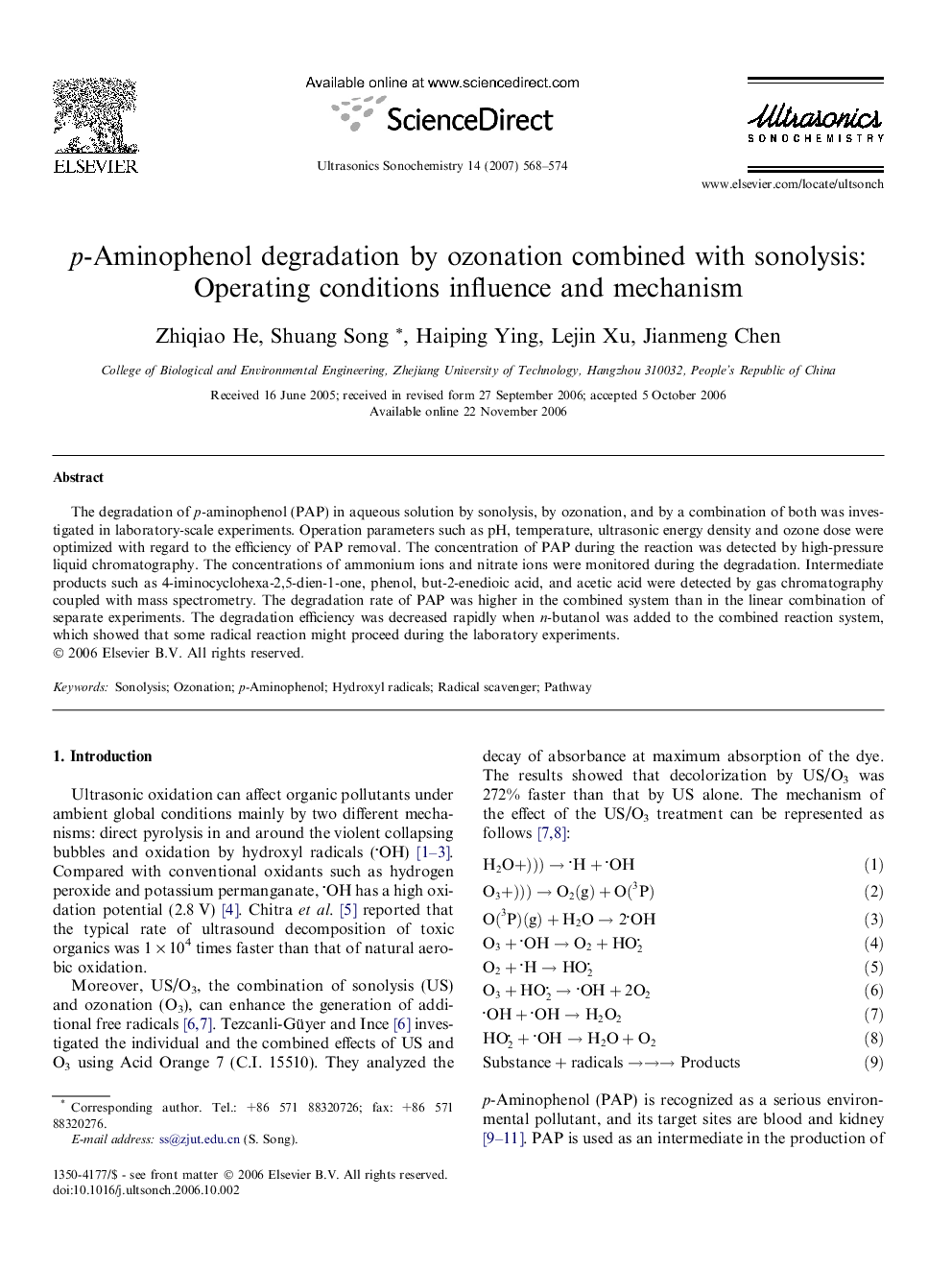| Article ID | Journal | Published Year | Pages | File Type |
|---|---|---|---|---|
| 1271351 | Ultrasonics Sonochemistry | 2007 | 7 Pages |
The degradation of p-aminophenol (PAP) in aqueous solution by sonolysis, by ozonation, and by a combination of both was investigated in laboratory-scale experiments. Operation parameters such as pH, temperature, ultrasonic energy density and ozone dose were optimized with regard to the efficiency of PAP removal. The concentration of PAP during the reaction was detected by high-pressure liquid chromatography. The concentrations of ammonium ions and nitrate ions were monitored during the degradation. Intermediate products such as 4-iminocyclohexa-2,5-dien-1-one, phenol, but-2-enedioic acid, and acetic acid were detected by gas chromatography coupled with mass spectrometry. The degradation rate of PAP was higher in the combined system than in the linear combination of separate experiments. The degradation efficiency was decreased rapidly when n-butanol was added to the combined reaction system, which showed that some radical reaction might proceed during the laboratory experiments.
